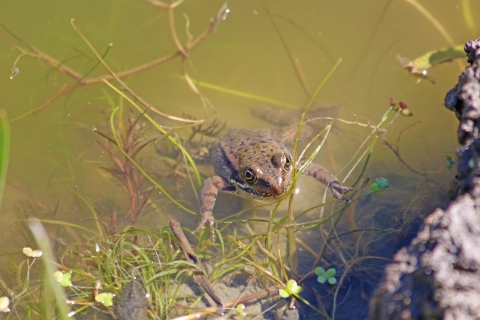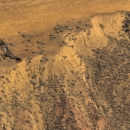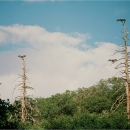About Us
The Guadalupe-Nipomo Dunes National Wildlife Refuge (Refuge) is located along the central Coast of California within the Guadalupe-Nipomo Dunes Complex, an 18-mile-long coastal dunes landscape that occupies approximately 20,000 acres of southwestern San Luis Obispo County and northwestern Santa Barbara County. The Dunes Complex is one of the largest coastal dune landscapes along the west coast of North America and provides habitat for a variety of state and federally listed plant and animal species. This dune complex is recognized as a National Natural Landmark National Natural Landmark
The National Natural Landmarks Program preserves sites illustrating the geological and ecological character of the United States. The program aims to enhance the scientific and educational value of the preserved sites, strengthen public appreciation of natural history and foster a greater concern for the conservation of the nation’s natural heritage. The program was established in 1962 by administrative action under the authority of the Historic Sites Act of 1935. The first National Natural Landmarks were designated in 1963. Today, there are more than 600 National Natural Landmarks in 48 states, American Samoa, Guam, Puerto Rico and the U.S. Virgin Islands.
Learn more about National Natural Landmark and contains some of the most remote and least disturbed habitats in the dunes complex.
The Refuge landscape consists of coastal strand and active dunes, central coast foredunes, central coast dune scrub, active interior dunes, coastal dune swale, coastal dune freshwater marshes and ponds, and coastal dune riparian riparian
Definition of riparian habitat or riparian areas.
Learn more about riparian woodland.
The 2,553-acre Refuge was established in 2000 as a satellite of the Hopper Mountain National Wildlife Refuge Complex, a branch of the U.S. Fish and Wildlife Service, which is headquartered in Ventura, California. The Refuge was created to conserve central California coastal dune and associated wetlands habitats and support the recovery of native plants and animals that are federally listed as threatened or endangered. At the time of the initial acquisition, interim management goals were developed for the Refuge. These interim management goals, which follow, have been the management priorities on the Refuge since its establishment in 2000:
- Protect, restore, and enhance native habitats to aid in the recovery of federally listed species (those species federally designated as threatened and/or endangered) and designated critical habitats on the Refuge.
- Protect, manage, and restore coastal dune habitats representative of the biodiversity in the central California coast area.
- Establish and maintain conservation partnerships and provide assistance for natural resource and land management activities with federal, state, tribal, and local governments and agencies, and with academic institutions and private conservation organizations.
Our Mission
The Refuge was primarily established to conserve imperiled plant and wildlife habitats and species. Several specific Refuge goals include the recovery of the federally endangered La Graciosa thistle (Cirsium scariosum var. loncholepis), marsh sandwort (Arenaria paludicola), Gambel’s watercress (Nasturtium gambelii), California least tern (Sternula antillarum browni), the federally threatened California red-legged frog (Rana draytonii) and western snowy plover (Charadrius nivosus nivosus, formerly Charadrius alexandrinus nivosus). The Refuge also serves to protect designated critical habitats for the La Graciosa thistle and western snowy plover.
Many imperiled plant species and at least 118 special status (i.e., state listed, federally listed, recognized by a special interest group, or a species of local interest) animal species occur in the Dunes Complex; Approximately 60 of these special status species have been observed on the Refuge.
Our History
The establishment of the Dunes Preserve began in the late 1980s through the efforts of the California State Coastal Conservancy and The Nature Conservancy (TNC). The parcel that is now a Refuge was once part of the Guadalupe-Nipomo Dunes Preserve located within the Dunes Complex. The former Dunes Preserve consisted of a group of properties set aside to protect the natural resources found within the Mobil Coastal Preserve (now the Refuge); Rancho Guadalupe Dunes Preserve County Park; Black Lake; and Pismo State Beach Dunes Natural Preserve.
On August 1, 2000, management of the four parcels within the Dunes Preserve were transferred from TNC to the current land management agencies. The Mobile Coastal Preserve was transferred to the Service, Rancho Guadalupe Dunes County Park went to the County of Santa Barbara Parks and Recreation Department, Black Lake went to the Land Conservancy of San Luis Obispo County, and the Pismo Dunes Natural preserve went to California Department of Parks and Recreation. When the management transfer occurred, the Dunes Preserve ceased to exist. The transfer of the management of 2,553 acres of the Mobil Coastal Preserve from TNC to the Service created Guadalupe-Nipomo Dunes Refuge (August 1, 2000).
Other Facilities in this Complex
Guadalupe-Nipomo Dunes National Wildlife Refuge is a part of the Hopper Mountain National Wildlife Refuge Complex. Other Refuges in the Complex include Hopper Mountain, Bitter Creek, and Blue Ridge National Wildlife Refuges.





